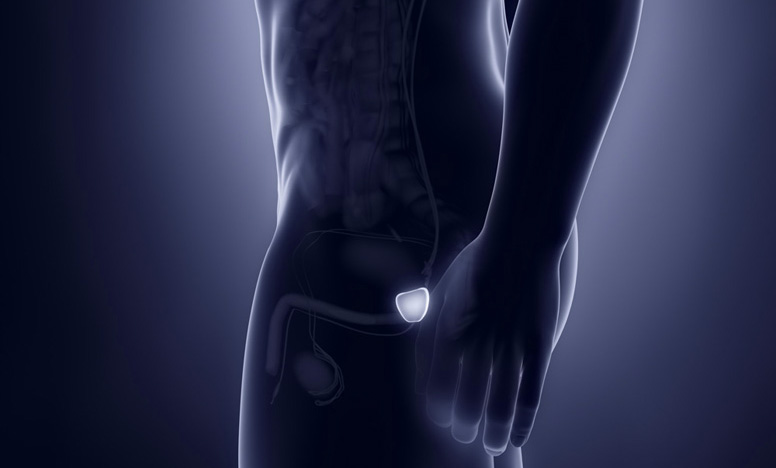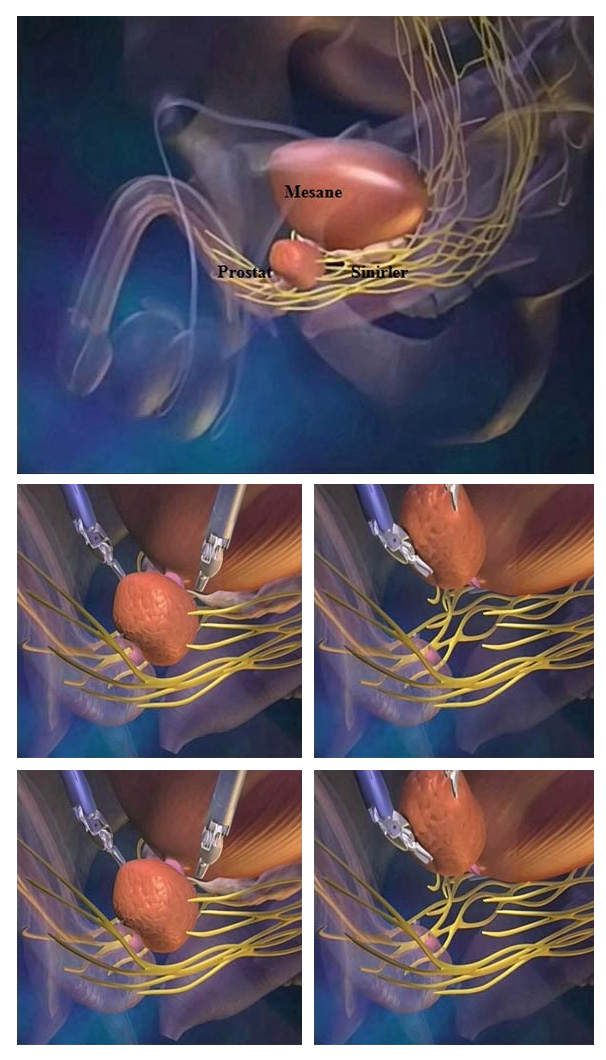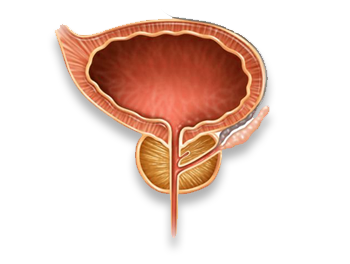Robotic Radical Prostatectomy
There are different methods available for treatment of prostate cancer. Radical prostatectomy surgery is the most effective of all.
Prostate is a gland in male reproductive system, surrounding the neck of the bladder and secreting a fluid that liquefies sperm. It consists of cells that are responsible for secretion and their supporting surrounding tissues. Prostate cancer occurs with abnormal development of those secreting cells.
Causes and Risk Factors
It is estimated that 50% of men aged over 70 and almost all men aged over 90 have microscopic levels of prostate cancer. A healthy man’s risk of developing prostate cancer throughout his life is around 17%. In other words, nearly one in every 6 men develop prostate cancer. Prostate cancer mortality rates have decreased after development of the PSA test and its starting clinical use in 1980s. Whereas there are no definitive statistics for our country, 250 thousand men are diagnosed with prostate cancer annually in the United States, 95% of whom are aged over 45.

Robotic Radical Prostatectomy
There are different methods available for treatment of prostate cancer. Radical prostatectomy surgery is the most effective of all. Patients with well-differentiated tumors who have undergone radical prostatectomy operation have a disease-specific survival rate of over 90% for 10 years. Therefore, radical prostatectomy operation is the most preferred method among all treatment methods. Traditional open radical prostatectomy operations involve a large surgical incision. This results in late healing of the patient after the operation, longer stay in hospital, greater risk of wound infection, and a large incision scar. In robotic prostatectomy, which has become popular in the recent years, the operation can be performed through small incisions, which in turn offers patients a minimally invasive treatment alternative that is less traumatic.
Stages of Robotic Radical Prostatectomy Operation

Removing the prostate while sparing the nerve-artery bundle.
Advantages of Robotic Radical Prostatectomy
Less blood loss.
In robotic radical prostatectomy operations, the abdomen is filled with gas. Bleeding is reduced considerably due to gas pressure. The gas evacuated from the abdomen at the conclusion of the operation. Furthermore, the 3-dimensional high-definition cameras that can magnify the operation area help see the bleedings more clearly and stop them early on. In general, it does not require blood transfusion to patients.
Reduced length of stay in hospital.
Since surgical incisions are smaller and blood loss is much less in robotic surgeries, patients can be discharged from the hospital earlier than they would be in case of an open surgery.
Earlier removal of catheter.
Since a waterproof connection (anastomosis) of the bladder and urethra is possible during robotic prostatectomy procedure, the catheter can be removed within 6-7 days.
Less pain.
Since incision wounds are smaller, patients feel less pain than they would after an open surgery.
Better cancer control.
Thanks to a 3-dimensional high-definition view and instruments that can move 7 degrees, robotic prostatectomy allows the surgeon to see and dissect the cancerous prostate tissue more clearly. Robotic surgery provides a better and clearer view of the atypical area of the prostate, allowing for a more precise resection. As a result, incidence of positive resection margins is substantially decreased.
Better urine control.
Compared to open radical prostatectomy, urine control is gained earlier in robotic prostatectomy. The clearer view, less bleeding and the possibility to keep the urethra relatively long are among the factors that help patients gain urine control sooner.
Earlier return to sexual activity.
Sparing the nerve-artery bundle around the prostate in suitable patients is better achieved in robotic prostatectomy, and such patients return to their normal sexual activity sooner.
Book an Appointment with Dr. Fatih Atug
Cantact Dr. Fatih Atug
Fatih Atug, M.D.
Urologist and Robotic Surgery Specialist
hidden +90 212 234 5958
hidden +90 532 234 5504
hidden info@fatihatugmd.com
hidden Harbiye Mahallesi, Maçka Caddesi,
Bahriye Apt. No:13 D: 3
Şişli / İSTANBUL
 |
 |
 |




